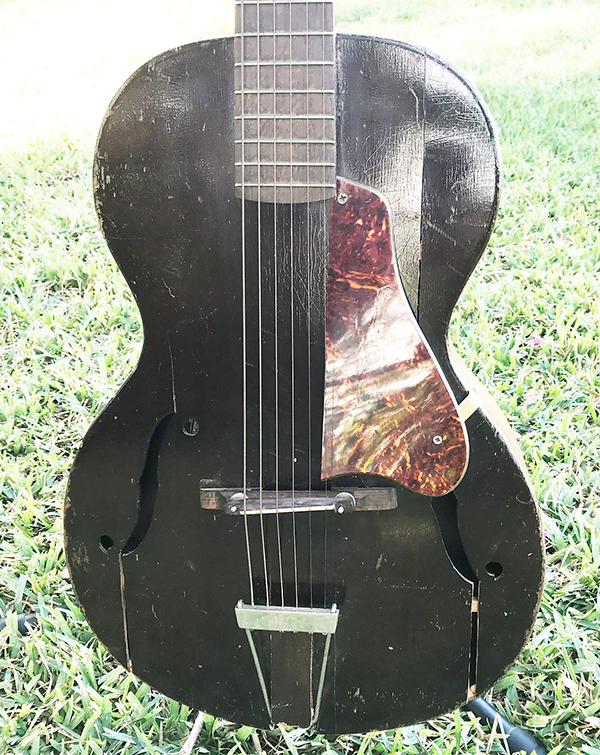
Close-up #39: 1931 Olympic SN 5454
These photos from an online auction listing (no affiliation) show a pretty wrecked old little guitar, with nasty cracks in top and rims. Nevertheless the instrument immediately caught my interest – not as a potential buyer, but as an Epiphone history nerd ... ;-)
The view through the bass-side f-hole reveals the "silver oval label" typically seen on early Epiphone Masterbilt instruments – with the serial number stamped into the wood next to it: "5454" – a SN estimated to be from around the turn of 1931/1932.
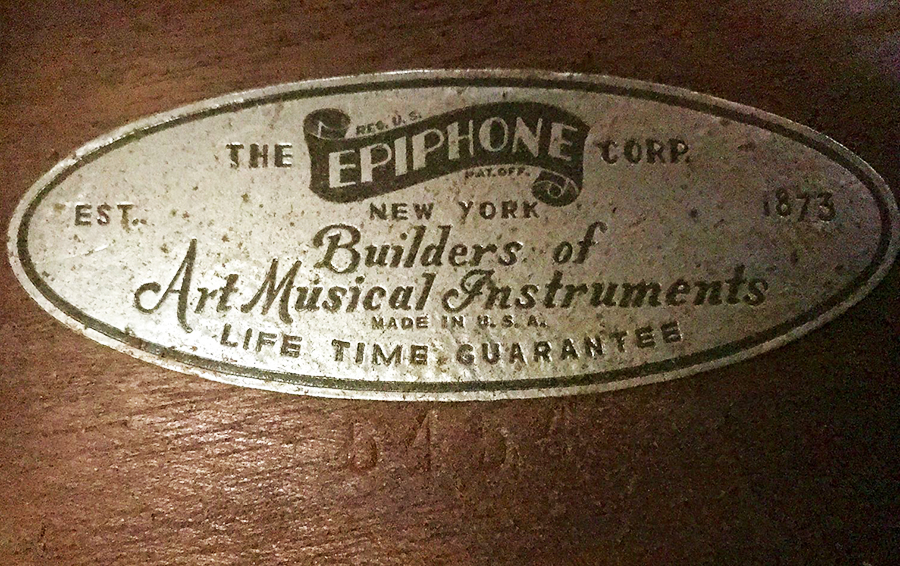
The headstock face is blank with no model info, however described to bear an Epiphone logo stamp on the back – as typically seen on low-end Epi models of the period such as the Olympic and Beverly Tenor.
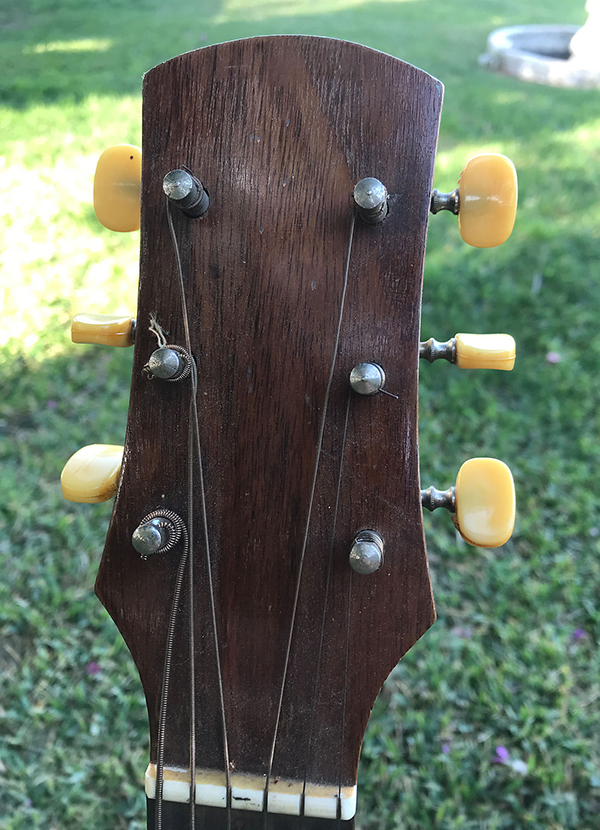
Being a 6-string guitar suggests this must be an Olympic model – since the Beverly model was its 4-stringed low-end companion, as outlined in the 1932 catalog.
While the respective 1932 catalog page (pictured further down) describes the Olympic as a true "carved" archtop model, this guitar is different: The top is totally flat – as can be seen in the photo below! All Olympics we documented in the past indeed appear to have a carved top – however: all of these have a SN significantly higher/later than 5454 ...
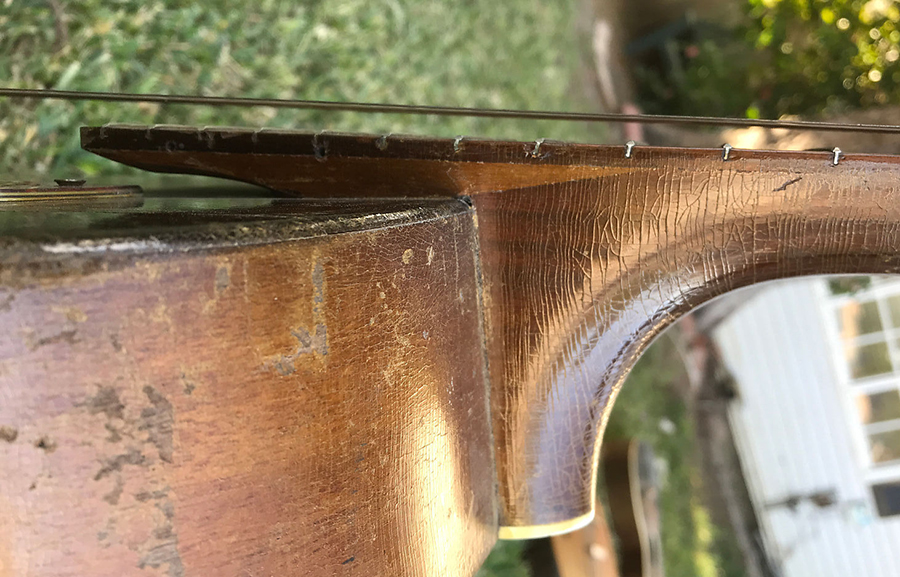
While the pickguard is obviously a later replacement, the bridge looks original: These units with a two-foot base and a bone insert in the saddle part have survived on several of the earliest Masterbilt instruments from 1931–32.
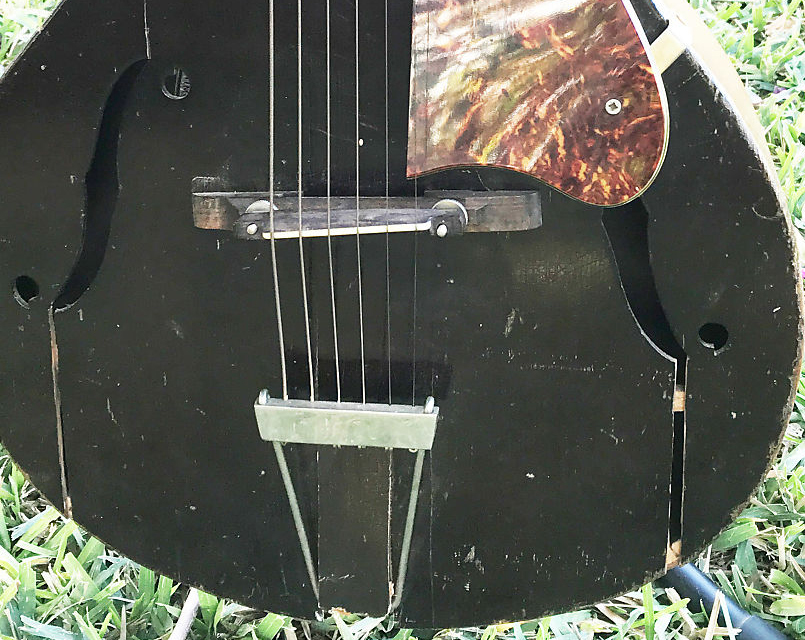
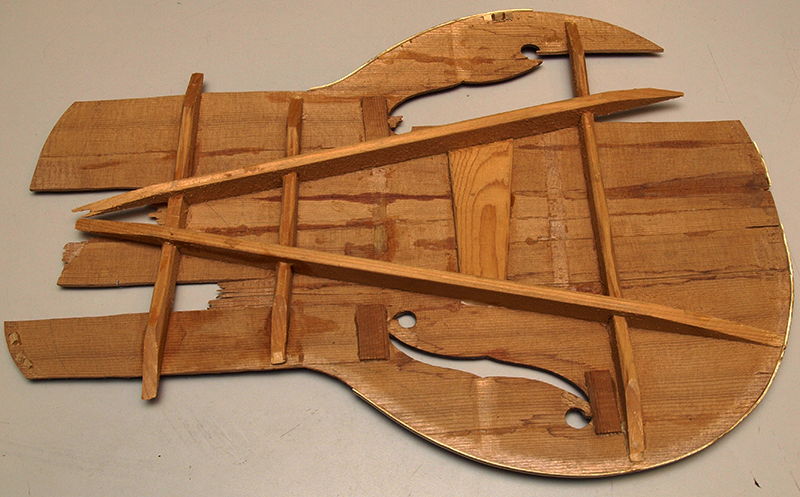
Now, how do these findings fit together with the 1932 catalog specifying "carved tops" for the Olympic and all higher models?
Well, the 1932 Masterbilt catalog was compiled and published a good year after the launch of the first instruments – and by that time the specs of some models had undergone significant changes. For example, when looking closely at the model pictures we notice 3 different pickguard types/generations: As mentioned in our previous Close-up story, most instruments are depicted with a "Type 1" pickguard – suggesting that these pictures were already created in 1931. However there are notable exceptions: Interestingly, the Olympic is depicted with a 1932 "Type 2" pickguard and what looks like an arched top with sunburst finish. And the Blackstone is shown with the even later "Type 3" pickguard version that likely just came into use around the catalog's launch date.
Why then was the Olympic not shown with an earlier "Type 1" pickguard like most other models?
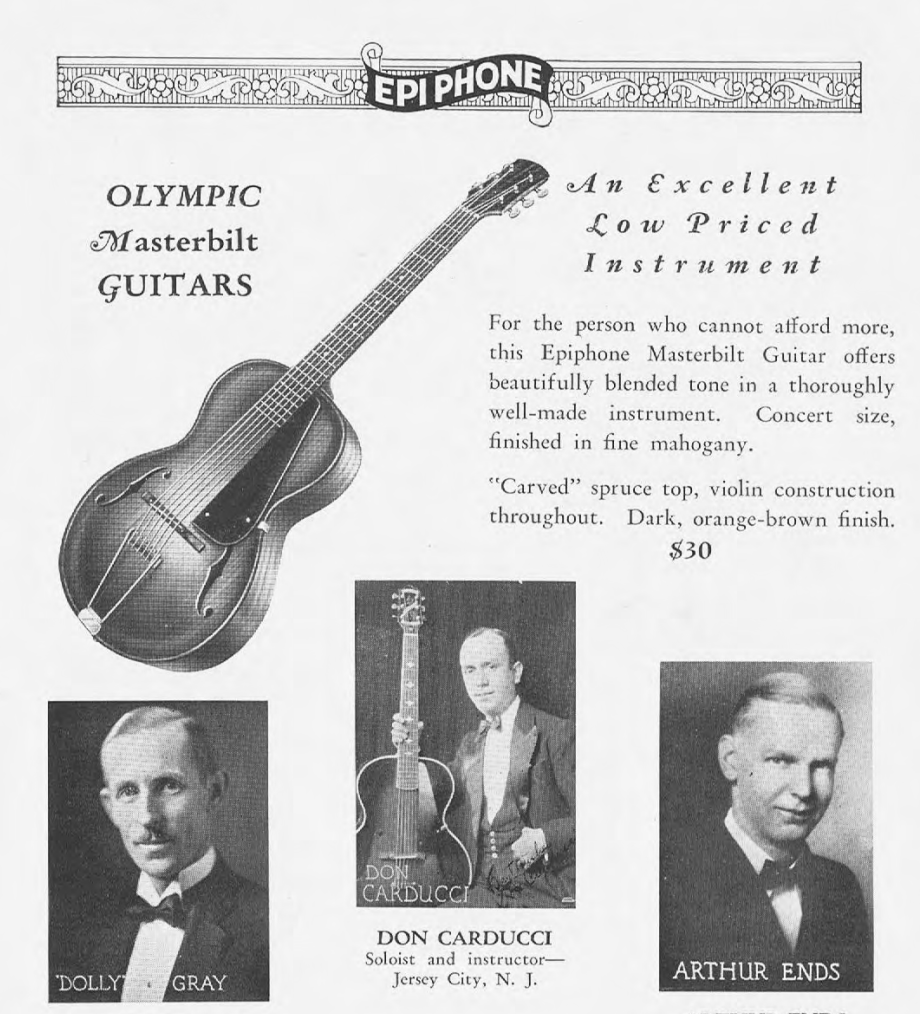
My explanation: The earliest version of the Olympic possibly had different specs and looks – which prompted Epiphone to order new artwork for this model. (Footnote: The same applies to the Adelphi mandolin, see this Close-up story.)
Could it be that the original 1931 Olympic had a flat top, without sunburst?
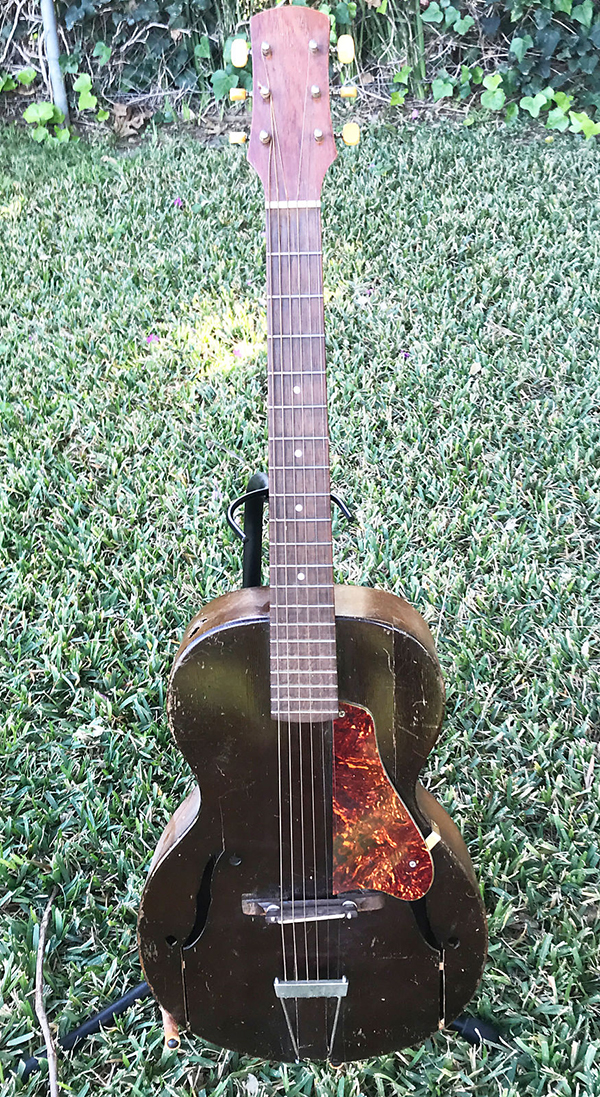
And now a little surprise: Page 25 of the 1934 Epiphone catalog shows a picture labeled "Beverly" of a guitar with 6 strings – while the Beverly was always described as a 4-string model (and also shown as such in the 1932 catalog, page 14). A closer look reveals that this catalog illustration (see below) is obviously much older than 1934 – actually from 1931, as the "Type 1" pickguard suggests.
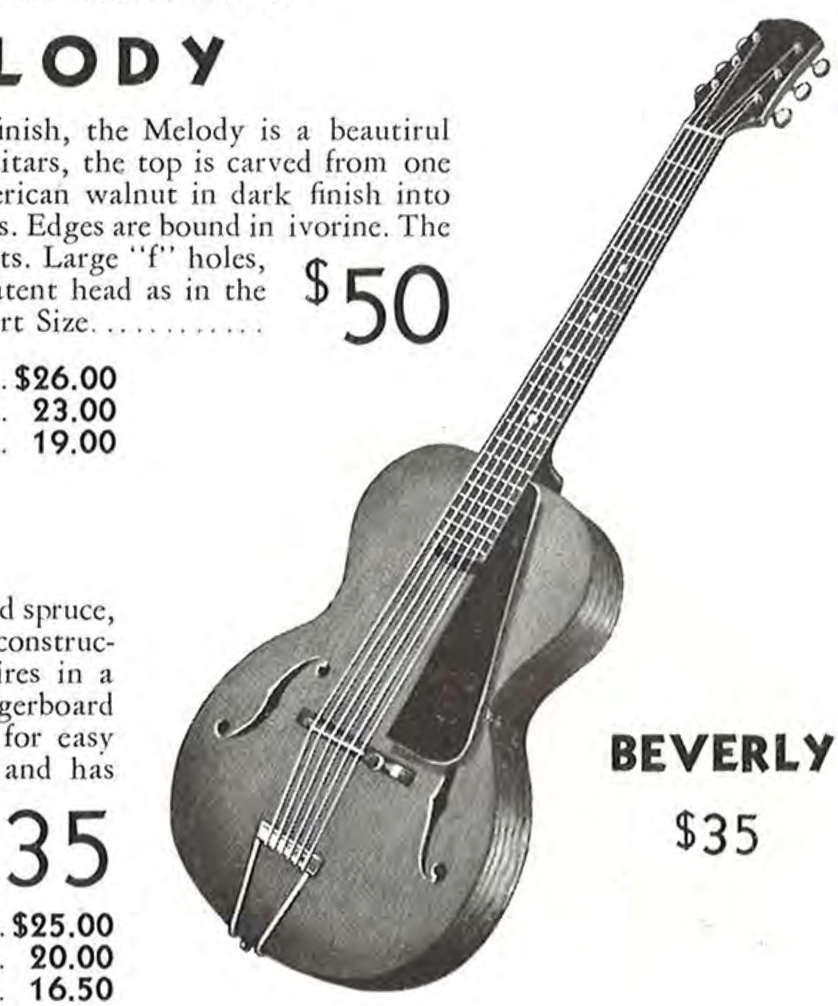
Although this is somewhat speculative – I am pretty convinced: This 1934 catalog picture of a small, plain 6-string guitar with f-holes in a plain colored top may actually be the original 1931 artwork for the Olympic model – dropped/replaced in the 1932 catalog, but (mistakenly) recycled in 1934 for the Beverly ...!
We assume this image was produced for a 1931 Epiphone Masterbilt flyer/catalog that has not been documented so far (see catalogs). We will know when a copy will surface ... If you hear about such an early Epiphone brochure, please let us know!
Addendum October 2018: An interesting photo reproduced in the November 1933 issue of The Metronome magazine has been brought to our attention (thanks, Anthony Hendrix!) – showing The Five Messner Brothers featuring a 6-string guitar we assume to be a 1931 Epiphone Olympic, with a dark(!?) finish top, early type pickguard and a tailpiece like in the "mystery" catalog image above.
We still hope that an example in pretty original condition will surface one day ...
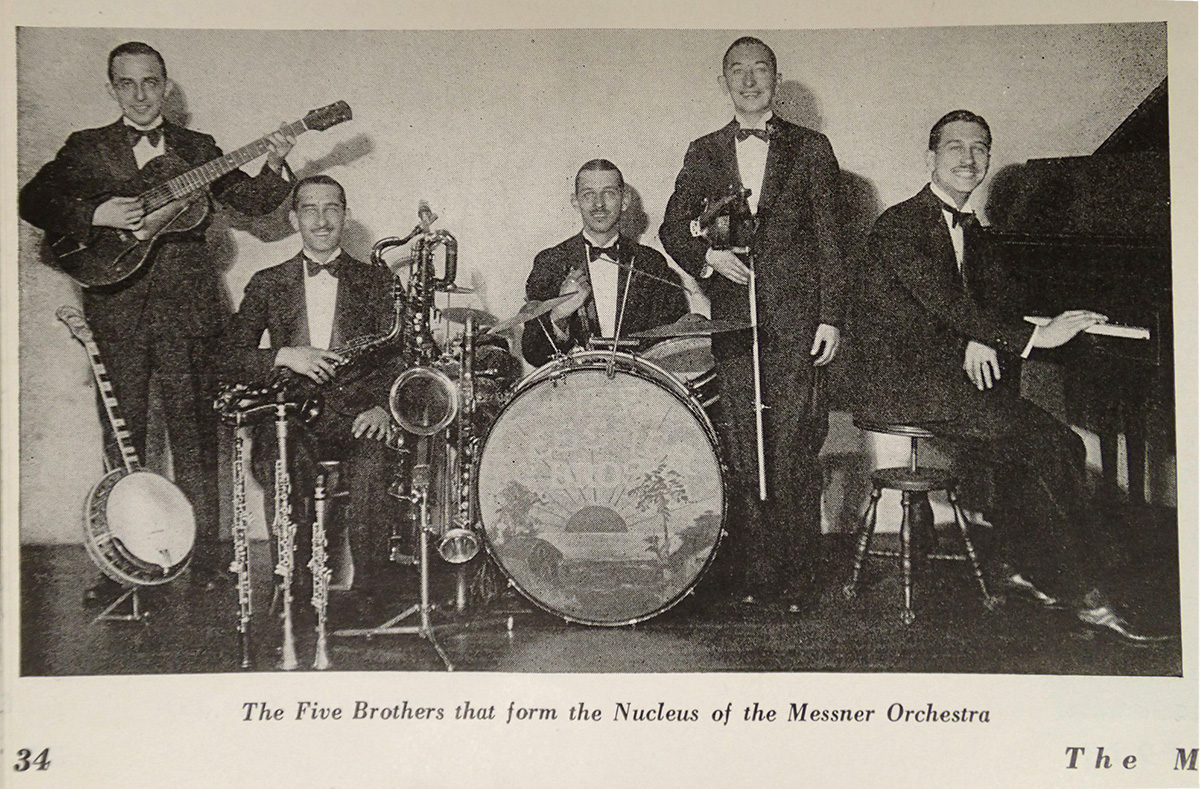
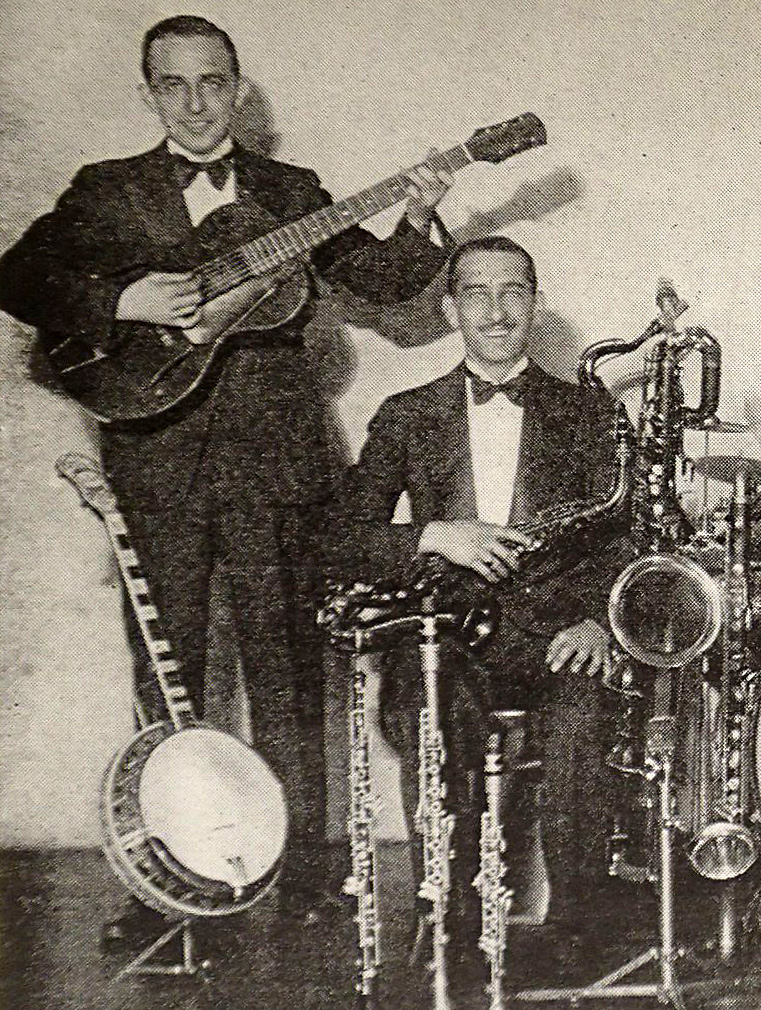
Addendum July 2019: This small-body Epiphone 6-string guitar with a flat top and f-holes was sold on Reverb.com – pictured below. The instrument's stamped SN is reported to be 5262 – just a few numbers away from the earliest known Beverly Tenor SN 5253 which shows the same natural top finish. It shows striking similarities with the aforementioned oddball "Beverly" picture from the 1934 catalog – including the black headstock veneer and distinctive tailpiece type. There is no model name on it – but being a 6-string guitar, I am pretty convinced we are looking at the earliest documented example of the Epiphone Olympic model.
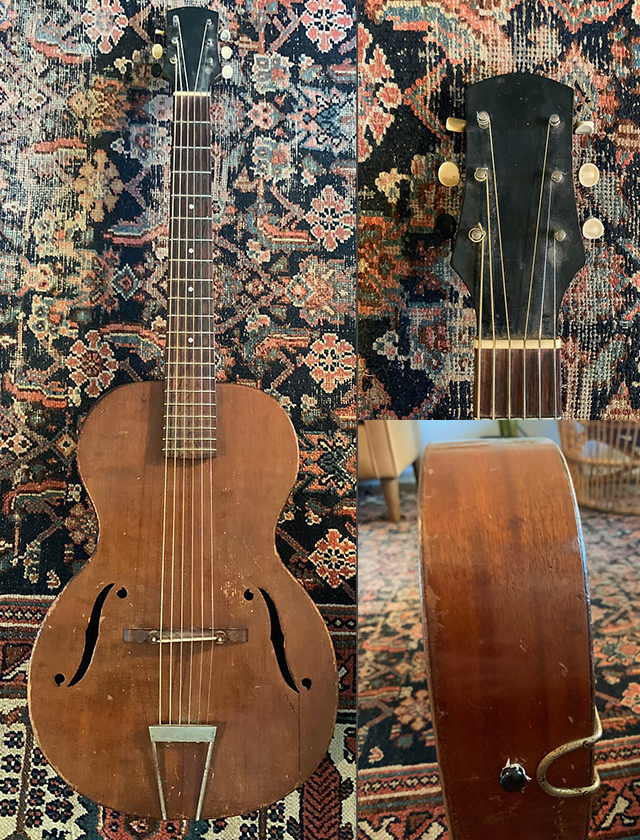
(January 27, 2018 – with later additions)